When it comes to shopping for your first-ever skimo racing setup there is no “fit-for-all” advice as each person’s goals, budget and athletic background are different. Some are new to skimo racing or even ski touring altogether while others have already achieved some athletic success in other endurance sports and want to give skimo a serious try from the start.
With all that in mind, I will do my best to provide the most useful and honest advice for everyone new to skimo, and point them to the right gear that is currently on the market.
Majority of the below mentioned gear can be purchased online or in person from our two favourite skimo specialized stores – Skimo.co in Salt Lake City and Cripple Creek Backcountry in Vail or Carbondale.
Boots
Don’t make the mistake focusing only on weight and price. Fit is very important when it comes to boots as it will determine how well you will be able to control the tiny race skis on descents as well as for how comfortable you will be training in them.
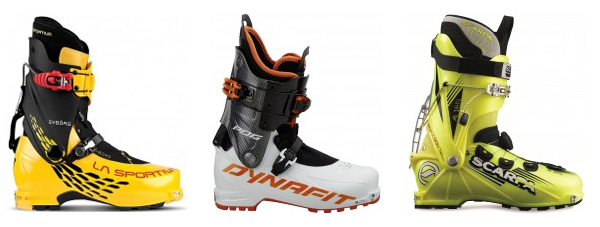
Only slightly heavier but more suitable for regular touring with bigger skis are the new Dynafit TLT7 Performance and Atomic Backland Carbon Light, both weighing just over 1kg/boot in size 27MP. Both are priced around $900 USD (850 Euro, $1200 CAD).
For those that are ambitious right from the start or can spend more money, you can try jumping straight into the Dynafit DyNA (basically a lighter PDG) or Scarpa Alien 1.0. Then the very top level boots, even more expensive, are the Pierre Gignoux Race 400, Dynafit DNA, La Sportiva Stratos (Cube and Hi-Cube), and Scarpa Alien 3.0.
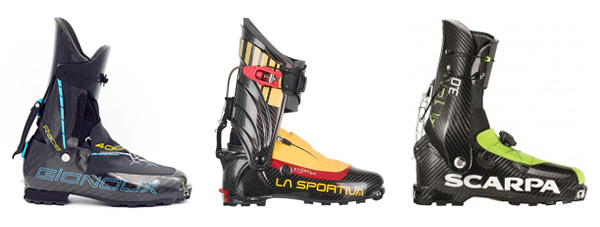
Skis
There are many skimo race skis on the market so I won’t list them all but I will give you a couple of pointers and will mention only those with the best price-to-weight ratio.
The good news is that the “entry level” skimo skis are generally only about 100-150g heavier that the top line yet costing about 20-30% less.
For racing, there is a rule that men’s skis have to be at least 160cm long while women’s can be 10cm shorter. You should be looking for skis weighing less then 900-1000g/ski and not wider than about 68mm (ideally 64-66mm) since all racing skins are manufactured for those widths.
To get you on race skis without paying the top price you should check out Hagan Ascent, Dynafit PDG, Atomic Backland UL 65, Voile WSP, Movement Gold Fish-X, or older models of race skis from these brands that can be still found on sale. You will pay around $600-700 USD ($800-950 CAD, 570-670 Euro) for all of the above new models.
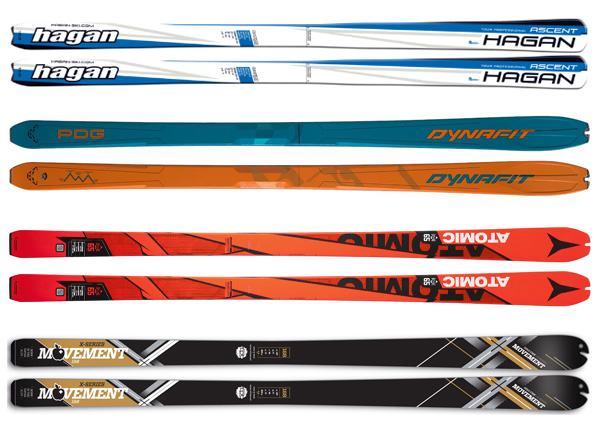
Bindings
There are three important things when shopping for race bindings (even “entry level”):
- With few exceptions, all models can be mounted only for one boot size as the heels have no adjust-ability!
- Don’t mix-and-match toe and heel pieces from two different brands on your race skis. First, it’s race illegal, and second it could pose a safety issue.
- Buy a model without the auto-lock feature – it’s forbidden by the sport’s rules. This means that when you step into the toe piece it won’t lock itself right into the touring (or locked-out) mode automatically but rather you have to nudge it to that position.
The good news is that all bindings listed will likely last you for many seasons. The only maintenance you will need to perform is changing the heel pins every 2-3 seasons (they are cheap).
Here are the models we recommend: Hagan ZR (optional mounting plates allow heel to move), Plum Race 150, Plum Race 170 (possible to adjust heel for 2-3 different boot sizes!), Dynafit Superlight 2.0, Kreuzspitze SCTT, ATK Race SLR World Cup.

Skins
Thankfully, there is not much to contemplate about “entry level” skins. You can just buy any skins that fit your race skis and are preferably made of mohair (or similar fast gliding fiber). The width should be about 3-6mm narrower than the middle of your skis – in general, race skins are pre-cut to 58-62mm and are the same width in their full length.
With that, we recommend buying the skimo race skins: Pomoca Race and Race Pro 2.0 models, Colltext PDG, Dynafit Speedskin, Ski Trab World Cup, Hagan Mohair.
Some race skins can be bought in a roll or as an ready-to-go package with bungee cord tip attachments already in place. The cost for a pair of skins will be around $100-160 USD (90-150 Euro, $130-220 CAD).
Pack
There are many skimo race packs on the market and more-or-less all of them perform quite well but like with boots the fit is important, and that is the crux with almost all packs if you are either smaller or taller than an average male (175-185cm / 5′ 7″ to 6′). The best idea is to try some on first or buy the one that lets you adjust the sizing.
All of last season, we worked with Ultimate Direction to design two race packs that allow for size adjustments and even come in two different sizes – the first skimo packs to ever do this! Both of them borrow some features from their famous running vests that we seamlessly merged with the necessary skimo functionality. Check them out: UD Skimo 8 vest and UD Skimo 18 vest.
For a new skimo racing pack/vest, expect to pay about $100-160 USD (90-150 Euro, $130-220 CAD).
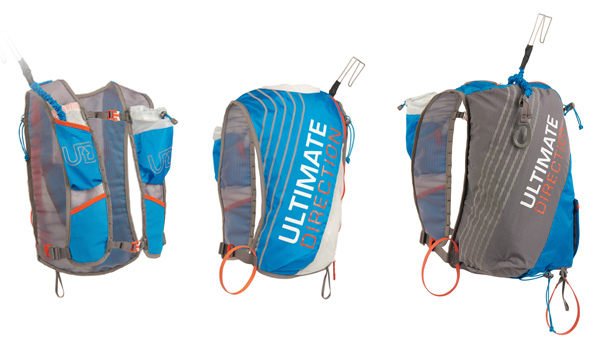
Helmet
With new regulations coming into effect this season, we recommend buying only helmets that are fully compatible with these new rules – we wrote a whole article about this a couple of weeks ago so there you can find all the right models.
Beyond that, even more than with boots and packs, the fit is very important! And if there is some space for a bandanna/buff to slide inside for those cold days then even better.
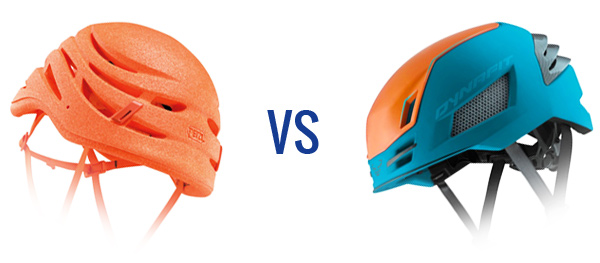
Skimo Race Suit & Clothing
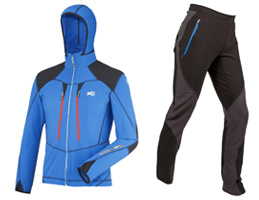 While skimo race suits are fine pieces of gear designed for the most efficient skins management and ventilation I don’t think a novice to the sport needs one for their first couple of races. As long as your clothing is well/slim fitting and your jacket has some nice pockets for skins then you will be just fine.
While skimo race suits are fine pieces of gear designed for the most efficient skins management and ventilation I don’t think a novice to the sport needs one for their first couple of races. As long as your clothing is well/slim fitting and your jacket has some nice pockets for skins then you will be just fine.
The middle ground between a full-on one piece race suit and just slim fitting touring clothing are some double-piece “suit” options. Perhaps buying just a jacket will give you most of what a one-piece suit can offer.
One-piece skimo racing suits cost around $250-350 USD (240-340 Euro, $340-470 CAD) while the two-piece solutions would come to about the same if you buy both the bottom and the top.
Ski Poles
Just like with the race suit, you don’t need specific skimo race poles for your first couple of events and most of your training. Light ski touring poles will do. In fact, even top racers use pretty much just shorter xc skiing poles as they work quite well.
To figure out the correct length for your ski poles see this article on how to do it – How to choose the right length (and kind) of skimo racing poles for you.
Prices will range from $80 to $180 USD.
Avalanche Gear & Training
Last but not least, let’s take a brief look at the avalanche gear you will need for racing and your training. On top of that, you should also take at least some basic avalanche courses to educate yourself how to use this gear the most effectively as well as to how to avoid avalanches altogether.
Avalanche beacon – choose a 3-antenna beacon from reputable brands like Pieps, Mammut, Backcountry Access, Ortovox. Prices will range from $300 to $500 USD.
Avalanche probe – for racing you only need a 240cm probe but if you are going to buy only one then we recommend 280cm or 320cm length. The extra length is beneficial should you find yourself in a real rescue. Carbon probes are lighter than aluminum but are also more expensive – we leave it up to you to choose. Prices will range from $50 to $150 USD.
Snow shovel – just like with a probe, to meet skimo racing regulations you only need a “kid’s toy” shovel like CAMP Crest but we recommend buying a more robust shovel that is actually usable in a rescue scenario. If you opt for something with a short handle but strong blade of decent size then you will be way more equiped. Prices will range from $50 to $100 USD.
Final thoughts
After reading the whole article it may seem that skimo racing is a super expensive sport but it is possible to be strategic with your spending. You can buy a lot of used gear (don’t do this with avalanche beacon) or using online sales and package deals from specialized shops like Skimo.co or Cripple Creek BC. Also, remember, that lots of this gear will last you for many years and will take you to place no expensive carbon bike can ever do.
If you would like to know more about race gear and even skimo training then check out our Manual For Ski Mountaineering Racing where we discuss specific how-to tricks.


Stano Faban says
Jonathan, thank you for all your input.
Jonathan Shefftz says
“I’m not sure what function this dynafit “autolock” binding has; does it really put the toe piece in locked (uphill) mode upon stepping in like the old race bindings use to?”
When I was mounting a pair, the current 2.0 “Auto” toe lever seemed to have the same retention as the older “1.0” “Auto” toe lever (which was metal, and also had a nifty little adjustment screw).
The “1.0” toe was introduced in 2011, although because of production problems (supplier’s titanium oven I heard at the time) I don’t think many people had it before 2012. But that position upon entry, although skinnable for almost all skintracks, sure isn’t “locked” even with the heel pins engaged for skiing.
Jonathan Shefftz says
“As far as I know, they want a binding toe to go to unlocked position by default (on step in), period.”
– Dynafit “Auto” toes (both 1.0 and 2.0) go to a spring-loaded position by default on entry. Ditto for ATK and Plum toes. So since ATK and Plum bindings are obviously okay for ISMF regs, then I don’t why Dynafit toes should be suspect?
– And that spring-loaded position is NOT locked! With the heel pins disengaged (i.e., skinning mode), lateral release values in my testing (with the big caveat that results also depend on the boot used by testing) have averaged around 60Nm for ATK rebranded as Hagan ZR (formerly the SL-R WC, with the toe still available as the SLR Lightweight), about 65Nm for the Dynafit 1.0 (haven’t tested the 2.0 plastic toe lever, but tension seemed similar when I mounted a pair), and Plum 135/145 ranged from 50 to 55 depending on the toe lever spring (as Plum has shipped two different versions over the years.
– By contrast, a Dynafit LTR/SSL “Manual” toe (i.e., to spring in the toe lever) tests out around 35, which is about the same as a Plum Guide toe.
– What that differential (i.e., spring-loaded “Auto” toe levers up to nearly 2x the retention of manual toe levers) translates into is higher effective lateral release values for skiing, but definitely still releasable (as can be demonstrated either with my own testing results, or just twisting out on snow while in the setup).
– For skinning, that means most skintracks are okay upon entry. For anything tricky though (kick turns, etc.), all of those models mentioned here offer an additional position by manually pulling up the toe lever even further, which for all practical purposes truly is “Locked”!
– Note that the first generation of Plum 135/145 bindings would NOT pass ISMF regs! To pass the new regs, Plum changed to a metal striker plate with two slits that allowed for a little hump. (This is still sold as an upgrade kit.) Before that was available, I jerryrigged the same effect just by placing some tape underneath the stock smooth plate such that the toe lever would go up all the way upon entry (i.e., the initial position still allowed for release, and than manually I could pull up the toe lever more so that the butt end of the lever was forced over the hump).
Stano Faban says
Jonathan, I don’t think Michael is disputing how exactly Dynafit works but perhaps he is challenging your earlier statement “Both generations of Dynafit Auto toes allow for multiple positions and also release so they must conform with ISMF rules.”
The issue I have with that is “….toes allow for multiple positions and also release so they must conform with ISMF rules.” because that’s exactly not how ISMF wants it. As far as I know, they want a binding toe to go to unlocked position by default (on step in), period. Thus the “liability” of locking-out is on the user who was educated about the risks.
NE Rando Race Series says
Michael, the Dynafit Auto toe pieces for the last few years (i.e. since then the red tripod version) have functioned essentially the same as the current Plum and ATK toes.
Stano Faban says
Michael, great to hear from you on this!
That was my perception as well that ISMF would not allow such bindings. It’s only an unfortunate way of wording that rule that does not make it clear enough, otherwise, I didn’t think they would be going backwards on this.
Michael Silitch says
On the autolock vs manual lock: I am an ISMF international referee. When I’ve worked on world cups, we did check to make sure the toe piece had the manual lock option and was not like the old style race auto lock. I’m not sure what function this dynafit “autolock” binding has; does it really put the toe piece in locked (uphill) mode upon stepping in like the old race bindings use to? In any case, I haven’t worked a world cup in 2 years, but can’t imagine the ISMF allowing the old autolock system again, considering all that they are doing in terms of safety. I advice my athletes I coach to make sure their toe pieces are put back into downhill mode after pulling skins (especially our youth athletes).
Jonathan Shefftz says
Also, all the race bindings from ATK and Plum (well, except maybe the new 99?) have spring-loaded toe levers that are very similar to the Dynafit “Auto” toes, i.e., the default position upon entry has enough retention for almost all skinning, but still allows for release.
(Although the toe lever can be manually raised up even more for a position that is truly locked.)
So since the ATK and Plum race bindings pass ISMF muster, then the “Auto” versions of the Dynafit race bindings would also seem to be okay by any reasonable interpretation.
NE Rando Race Series says
Both generations of Dynafit Auto toes allow for multiple positions and also release so they must conform with ISMF rules.
Stano Faban says
Ian, good question as sometimes things are confusing between ISMF rules, national rules and actual products. Here is my take on it:
1) When you go to Dynafit’s website (http://www.dynafit.com/us/low-tech-race-2-0-automatic-binding.html) then you can see in a select drop-down you can choose from Auto and Manu options.
2) As it stands right now, the current ISMF rule is confusing about the autolock feature (but has not been before – go figure). This is the only part in there that refers to (auto)locking and frankly, it’s confusing:
“…The lateral release (front part) has to be lockable manually without tool. If a Binding is TÜV certified, the locking mechanism is not necessary.”
To me that reads like an auto-lock is fine as long as you don’t need an additional tool in use (so the binding is self-contained/self-sufficient).
See page 9 – http://ismf-ski.org/www/sites/ismf-ski.org.www/files/2016_2017_ISMF_Sporting_and_Ranking_Rules_updated_04.10.2016.pdf
3) If you plan on racing in Europe then I would advise using a binding with manual lock option. Just to be safe. That’s what I am doing (and have done in the past with all other gear.)
4) From my experience, Canadian and US federations do not “enforce” the auto/manual lock (yet) because the main aim is to attract as many people as possible. So many times even bike helmets are allowed. I agree with this approach and have not see/heard of about any problems/injuries.
Hopefully this makes your decision easier!
Stano
Ian says
So would the dynafit low tech race 2.0 automatic be illegal for IMSF? I haven’t been able to find anything yet in the rule books that says otherwise. Thanks
Apingaut says
Awesome. Keep up the good work.
Stano Faban says
Hi Andrew, thank you for the additional tips. I will try working in some of them without opening too many “cans of warms” 🙂
Stano Faban says
Hi Werner, thank you for stopping by.
I would be happy to include them in such a gear guide or other articles in the future. As of now, I don’t have any experience with contour skins so it’s difficult for me to suggest them.
To provide you with some perspective – much of the gear reviewed on Skintrack or used by me has been paid for personally with money I earned doing other jobs. If companies keep “turning down” Skintrack then I will mostly keep talking about gear I know at least somewhat. I cannot buy everything in order to try it out – I just buy what I think it’s good and if it is then I stick to it.
andrew says
Nice article. having recently gone through this process personally, i would add a few things:
> if your budget dictates you spread out this gear acquisition process over 2 seasons (like i did), i would highly recommend race boots before race skis, race suit, etc. The weight savings and outstanding friction-free walk mode of race boots has a MUCH larger impact on racing in my experience than race skis, suit, etc. I paired race boots with a ~1150g ski for my first season of racing with good success.
> you are much more likely to find great deals and clearance prices in the late spring and summer than in the late fall and winter
> highly recommend 2 pairs of skins (due to high likelihood of glue failure in cold/fresh snow conditions)
> if you are at all savvy with basic tools, buy skins off the roll and make your own bungee tip attachments. its about half the price of buying pre-assembled skins (there are several step-by-step instructions to be found online)
Werner Koch says
Hi Stano,
nice to read. Maybe next time you may consider including our contour skin into the market overview. Now successully distributed in th North Americy by CAMP http://www.camp-usa.com/products/contour-skins/ and much praised by Lou Dawson of http://www.wildsnow.com. he calls them “the Tesla of ski skins”, mostly because of the unique hybrid glue technology.
Have a nice Christmas!
Werner Koch
http://www.contourskins.com